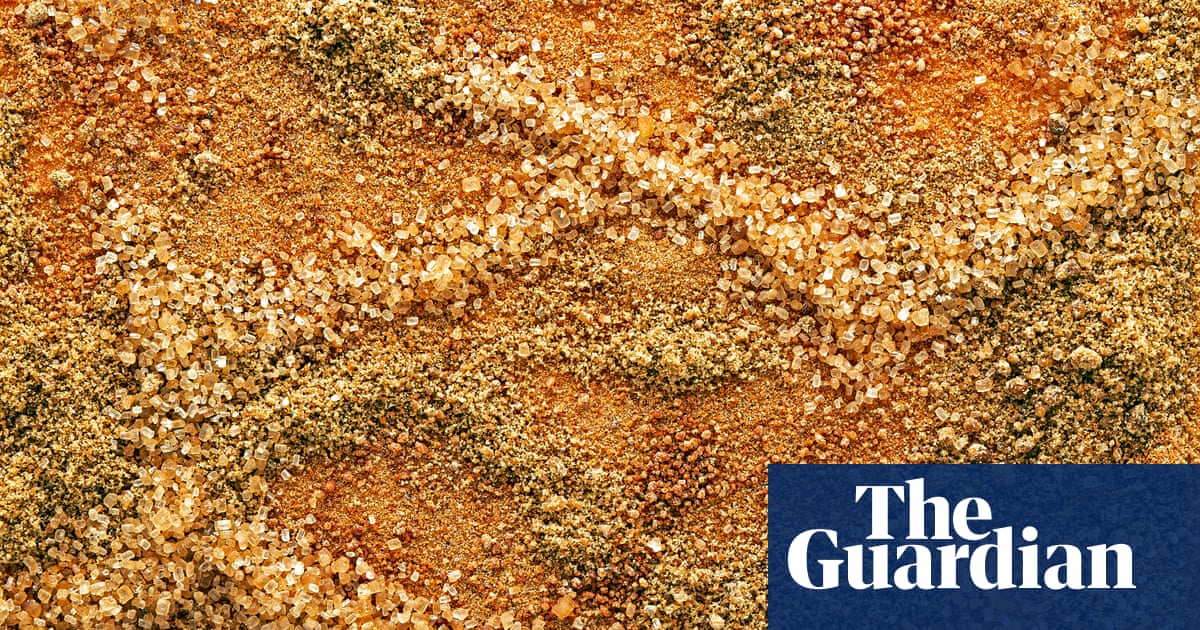One night, I was preparing steak for dinner and mistakenly reached for the wrong white granulated substance. Instead of salting my steak to create a brown crust by searing, I created a brown crust with notes of caramel.
Ethan Frisch, co-founder of Burlap & Barrel, an artisanal spice company that works with small producers worldwide, laughed wryly when he heard this story over Zoom. âThis is the first time in history anyone could make that mistake. Refined, white-bleached sugar is a very modern development in the centuries-old sugar industry. Sugar is brown! Itâs only white when you do a lot of work to remove the brownness.â
His co-founder, Ori Zohar, elaborated: âThe whole sugar industry is focused on this pure white chemical that is so far away from being a plant: a shelf-stable, consistent, interchangeable ingredient. None of those qualities make for good food,â though it makes an item that can be traded around the world for similar base prices.
Many of us only know white, granulated sugar that comes packaged with no information about its sugarcane or beet origins â much less its geographical origins â on its package. But sugar is diverse. White, processed sugar makes up the largest segment of the global market, but sugar also comes in liquid and brown forms. About 80% of the worldâs production comes from sugarcane, but some comes from beets. Even sugarcane itself is not a monolith; though most sugar is derived from the Saccharum officinarum species and its hybrids, there are hundreds of varieties which have adapted (or been adapted through human intervention) to their specific ecosystems.
Zohar and Frisch are on a mission to âdo to sugar what has been done to saltâ in the last few years. You can now buy specialty salts from specific places and have specific characteristics: a black Himalayan salt that has a sulphurous funk or Burlap and Barrelâs Pearl salt from Tanzaniaâs Swahili coast, with its surprisingly spherical crystals.
Saltverk, which sells hand-harvested salt from Iceland, has been riding this wave. Founder Björn Steinar Jónsson said, âPeople want to know where the products theyâre buying are from. Weâve seen this as a gradual growth in the salt industry, and really, weâre only at the beginning stages of where people understand whatâs going into their salts. As a staple ingredient used by most of the world, sugar could follow a similar path.â
This is not just marketing. A sugarâs texture and taste can be as individual as coffee beans from a corner of Ethiopia or wine grapes grown on a chilly slope in the Pacific north-west.
Brown sugar from Okinawa in Japan is a favorite of pastry chef Salvatore Martone of Le Jardinier in New York. He said: âOkinawa brown sugar (kokuto) is produced on eight remote Japanese islands. Each island produces sugar that has a slightly different taste. The sugar is sold in small irregular lumps, and the flavor is rich minerally smokiness with an earthy undertone and a hint of bitterness.â He uses it for ice-cream.
Burlap & Barrelâs founders want to introduce consumers to sugars connected to a specific place and that have a distinctive flavor born of the environment that produced them. The companyâs work expands the market for traceable sugar, focusing on sourcing from communities using traditional processing methods.
Itâs introduced panela, a traditionally unrefined cane sugar from Boyacá, Colombia. In June, the company is launching two other single-origin sugars, jaggery from Satara district, India, and a granulated sugar from Portvale, Barbados. When the company uses the term âsingle-originâ, it doesnât merely refer to a country of origin, but a single farm or producer.
Had I reached for their sand-textured panela in making my steak, I could not have mistaken it for salt. Its soft, irregular granules are the color of milk caramel, with which it shares similar aromas. A spoonful is like sucking on sweet cinnamon toffee. It melts on the tongue, leaving a trace of floral spice, as if I took a shot of ginger juice.
The jaggery has the varied, irregular texture and look of crushed peanuts, and opening it fills my apartment with the scent of fresh squeezed sugarcane. It comes from Dr Shashikant Salunkhe, who has grown turmeric for Burlap & Barrel as part of a regenerative agricultural system. A local refiner filters the raw sugarcane juice with wild okra, whose gel collects any floating impurities. The jaggery is granulated and then stone ground, ancient methods that are worlds away from industrial filtration and mechanized refinement.
The Barbadian sugarâs crystals are startlingly angular and crunch loudly between oneâs teeth.
âBarbadian sugar has to de-commoditize if theyâre going to compete globally,â said Frisch. This means that the countryâs producers need to embrace their sugar as a specialty product and divert it from being blended with other sugars before it reaches supermarket shelves where it will be simply labeled âcane sugarâ. Frisch wants people to understand what makes Barbadian sugar so good â the terroir of its coral island, flavors enhanced by molasses, cane fed by rainwater and not irrigation like in most industrial practices, and its history.
Sugar production has an ugly past. About 5 million slaves were brought to the Caribbean, most to toil on sugar plantations starting in the mid-1500s. The slave trade reached its height in the 1700s, and Barbados, known as Sugar Island, was its crown jewel. Abolitionists in Europe and the US waged boycotts of sugar, a slave-derived good that represented abhorrent working conditions.
Centuries later, Frisch and Zohar want consumers to demand sugars that retain their individual, nuanced flavors. âHome cooks and chefs have huge buying power,â said Zohar, which could advance more sustainable and equitable production. Sugarcane farms are responsible for massive deforestation. Added to innumerable food products, sugar drives the global obesity epidemic. Sugar from the Dominican Republicâs Central Romana corporation, which is often supplied to and sold as Domino brand, has been banned from the US since November 2023 due to allegations about exploitative work conditions and forced labor among its largely Haitian migrant workforce.
But as of the moment, itâs difficult to know exactly where your sugar comes from. Non-alcoholic beverage company Everleaf goes to extraordinary lengths to source botanicals. Founder Paul Mathew is a conservation biologist, and his company has tracked down âcherry blossoms, hand-picked in the Shizuoka region of Japan between May and Augustâ and gum acacia, used for mouthfeel, from the Sahel region of Africa.
That wasnât possible with sugar, which Mathew said is all being âhoovered up into a commodity-based industrial systemâ. The UK-based company is currently switching from fair-trade sugar derived from sugarcane to beet sugar from the UK, prioritizing a lesser carbon footprint.
One way for a company to know where its sugar comes from is for that business to grow it themself. This is what Copalli Rum in Belize chooses to do. The majority of rum is made from molasses, produced when sugarcane juice is boiled multiple times in sugarâs refining process and sucrose is removed. But new agricole-style rums, which are made from fermenting fresh sugarcane juice, like Copalli, are emerging from former commodity sugar plantation fields, from Hawaii to Belize. Copalli uses red and black cane instead of yellow cane engineered over many years to produce commercial sugar in Belize.
Wil Maheia, the philanthropy services advisor for Copalli, has tended to this area his entire life. His great-grandparents worked the land when it was a sugarcane plantation and he helped organize Belizeâs first debt-for-nature swap (a transaction where a countryâs debt is exchanged for environmental conservation commitments).
Heâs proud to say: âWe have never cut any rainforest to plant cane.â To the contrary â Copalli is cultivating 220 acres of sugarcane on old citrus orchards rather than reaching into 12,000 acres of rainforest. As the largest employer in southern Belize, itâs creating jobs that do not rely on the logging industry and deforestation.



